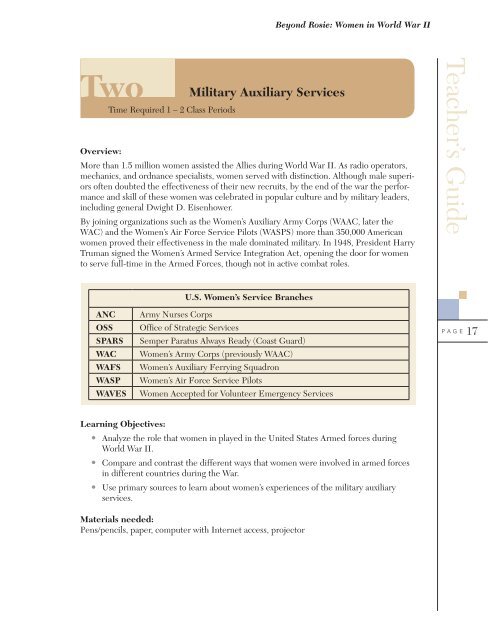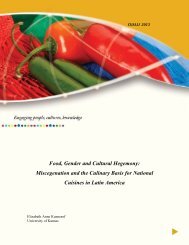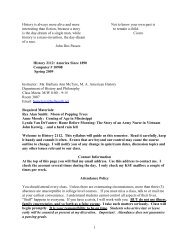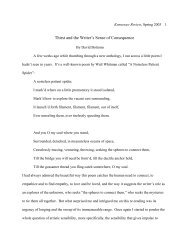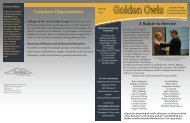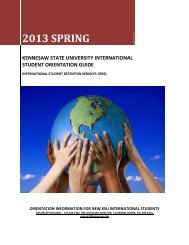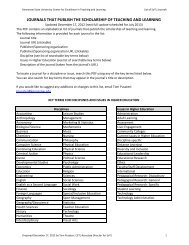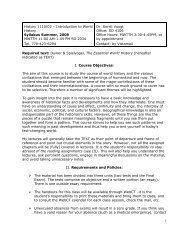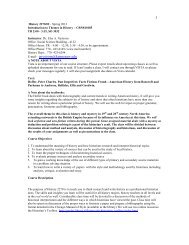Beyond Rosie: Women in World War II - Kennesaw State University
Beyond Rosie: Women in World War II - Kennesaw State University
Beyond Rosie: Women in World War II - Kennesaw State University
Create successful ePaper yourself
Turn your PDF publications into a flip-book with our unique Google optimized e-Paper software.
<strong>Beyond</strong> <strong>Rosie</strong>: <strong>Women</strong> <strong>in</strong> <strong>World</strong> <strong>War</strong> <strong>II</strong><br />
Two<br />
Overview:<br />
Time Required 1 – 2 Class Periods<br />
Military Auxiliary Services<br />
More than 1.5 million women assisted the Allies dur<strong>in</strong>g <strong>World</strong> <strong>War</strong> <strong>II</strong>. As radio operators,<br />
mechanics, and ordnance specialists, women served with dist<strong>in</strong>ction. Although male superiors<br />
often doubted the effectiveness of their new recruits, by the end of the war the performance<br />
and skill of these women was celebrated <strong>in</strong> popular culture and by military leaders,<br />
<strong>in</strong>clud<strong>in</strong>g general Dwight D. Eisenhower.<br />
By jo<strong>in</strong><strong>in</strong>g organizations such as the <strong>Women</strong>’s Auxiliary Army Corps (WAAC, later the<br />
WAC) and the <strong>Women</strong>’s Air Force Service Pilots (WASPS) more than 350,000 American<br />
women proved their effectiveness <strong>in</strong> the male dom<strong>in</strong>ated military. In 1948, President Harry<br />
Truman signed the <strong>Women</strong>’s Armed Service Integration Act, open<strong>in</strong>g the door for women<br />
to serve full-time <strong>in</strong> the Armed Forces, though not <strong>in</strong> active combat roles.<br />
Teacher’s Guide<br />
ANC<br />
OSS<br />
SPARS<br />
WAC<br />
WAFS<br />
WASP<br />
WAVES<br />
U.S. <strong>Women</strong>’s Service Branches<br />
Army Nurses Corps<br />
Office of Strategic Services<br />
Semper Paratus Always Ready (Coast Guard)<br />
<strong>Women</strong>’s Army Corps (previously WAAC)<br />
<strong>Women</strong>’s Auxiliary Ferry<strong>in</strong>g Squadron<br />
<strong>Women</strong>’s Air Force Service Pilots<br />
<strong>Women</strong> Accepted for Volunteer Emergency Services<br />
PAGE 17<br />
Learn<strong>in</strong>g Objectives:<br />
• Analyze the role that women <strong>in</strong> played <strong>in</strong> the United <strong>State</strong>s Armed forces dur<strong>in</strong>g<br />
<strong>World</strong> <strong>War</strong> <strong>II</strong>.<br />
• Compare and contrast the different ways that women were <strong>in</strong>volved <strong>in</strong> armed forces<br />
<strong>in</strong> different countries dur<strong>in</strong>g the <strong>War</strong>.<br />
• Use primary sources to learn about women’s experiences of the military auxiliary<br />
services.<br />
Materials needed:<br />
Pens/pencils, paper, computer with Internet access, projector


